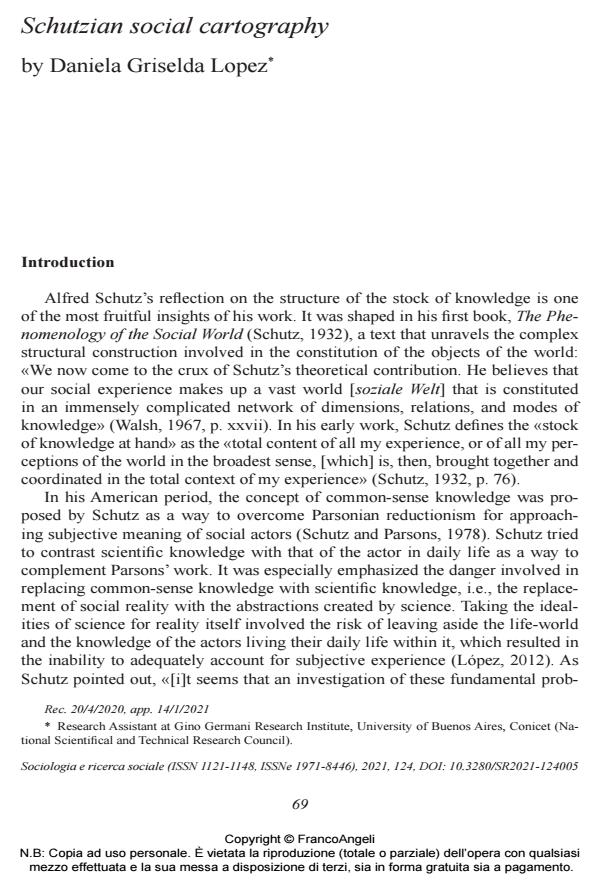Schutzian social cartography
Journal title SOCIOLOGIA E RICERCA SOCIALE
Author/s Daniela Griselda Lopez
Publishing Year 2021 Issue 2021/124
Language English Pages 22 P. 69-90 File size 249 KB
DOI 10.3280/SR2021-124005
DOI is like a bar code for intellectual property: to have more infomation
click here
Below, you can see the article first page
If you want to buy this article in PDF format, you can do it, following the instructions to buy download credits

FrancoAngeli is member of Publishers International Linking Association, Inc (PILA), a not-for-profit association which run the CrossRef service enabling links to and from online scholarly content.
The aim of this paper is to explore an uncharted aspect of Schutzian description of the structure of the stock of knowledge. The linkage between the stock of knowledge and the life-world isexamined through the cartographic metaphor of the map. Starting from an analysis of different manuscripts, it is shown that the cartographic metaphor is the heuristic resource used by Alfred Schutz to depict the complex relationships between knowledge and life-world. It is argued that the allegorical reference to the use of maps expresses the conversion of our perception of the life-world into contour lines or hatchings, which corresponds to the phenomenological insight that objects are given in perception through manifesting sides or adumbrations. Moreover, it is stated that the metaphor of the relevance-isohypses helps Schutz to describe not only the structurization of our stock of knowledge into theme and horizon and the levels of familiarity and typicality we perceive in the objects of the world, but also the incomplete character of our knowledge, i.e., the shadows and hatchings sketched in it as a consequence of the opacity of the life-world. It is maintained that far from belonging solely to geography, the metaphor of the unknown world as a «terra incognita» suggests an inquiry into the process of production of knowledge. The cartographic blanks do not preclude the impossibility of knowledge, but, on the contrary, they constitute its original source.
- The Palgrave Handbook of Macrophenomenology and Social Theory Daniela López, pp.157 (ISBN:978-3-031-34711-5)
- The Palgrave Handbook of Macrophenomenology and Social Theory Alexis Gros, pp.29 (ISBN:978-3-031-34711-5)
Daniela Griselda Lopez, Schutzian social cartography in "SOCIOLOGIA E RICERCA SOCIALE " 124/2021, pp 69-90, DOI: 10.3280/SR2021-124005